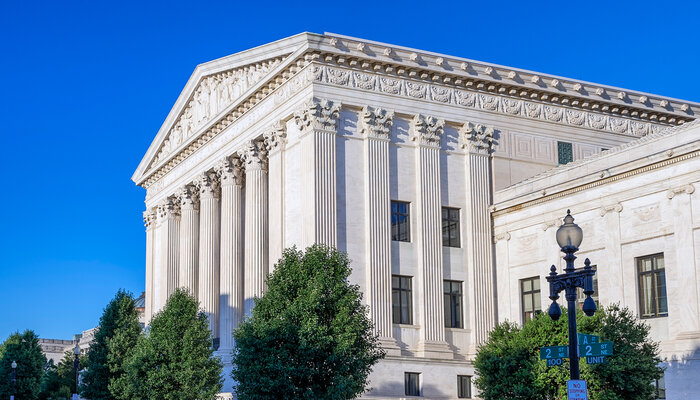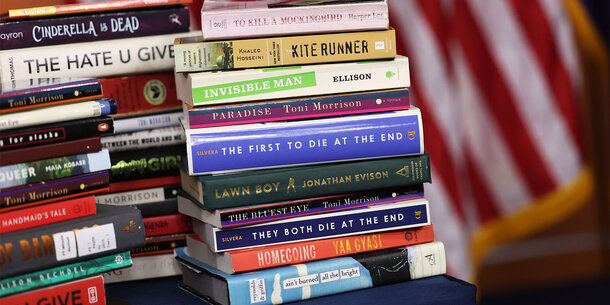The Supreme Court declared more than a half-century ago that public school students have First Amendment rights. Now the justices are considering what that means in the age of social media.
In 2017, Brandi Levy, then a 14-year-old student at a small public high school in Pennsylvania, tried out for her school’s varsity cheerleading squad. The weekend after her tryout, she learned she did not make the team and would be placed on the junior varsity squad for the second year in a row. This news came around the same time that she failed to secure her preferred spot on the school’s softball team and final exams were just around the corner. Levy was upset, and in typical teenager style, she turned to social media to express her frustrations. She posted a photo on her personal Snapchat account gesturing with her middle finger and a caption that read “f— school f— softball f— cheer f— everything”.
The post was shared only with her followers, and, like all Snapchat content, it disappeared after 24 hours. In that time, however, a fellow student took a screenshot and shared it with the cheerleading coach. Despite the fact that it was uploaded off-campus and did not target, threaten, or harass anyone, the coach suspended her from the team for the rest of the year on the grounds that Levy had violated the cheerleading program’s code of conduct, which required that students “have respect for [their] school, coaches, teachers, other cheerleaders and teams” and not post any “negative information” about the program. Levy and her parents protested, but the principal and school board upheld the coach’s decision.
The U.S. Court of Appeals for the Third Circuit ruled in Levy’s favor last year, holding that schools may not regulate off-campus speech on social media, at least where the speech does not threaten violence to others.
Now Levy and her teenage use of F-bombs on Snapchat are at the center of a U.S. Supreme Court case that could reshape the status of student speech. Oral arguments in the case, Mahanoy Area School District v. B.L., are set to take place on April 28; ultimately, the justices will determine whether and how schools can regulate off-campus student speech. The Brennan Center joined the Electronic Frontier Foundation and the Pennsylvania Center for the First Amendment in urging the Court to uphold the Third Circuit’s decision and preserve the scope of student free speech.
The outcome in this case will turn on the Supreme Court’s application of its 1969 landmark case, Tinker v. Des Moines, to off-campus speech. The Court held that neither students nor teachers “shed their constitutional rights to freedom of speech or expression at the schoolhouse gate,” cementing students’ First Amendment rights in schools. The decision established that public schools could not censor free speech unless it “materially and substantially” interfered with the operations of a school.
As a result, students have been able to participate in the national discourse on key issues, from protesting against police brutality to organizing around gun violence in the wake of the Parkland shooting. Social media has become a particularly vital platform for students to engage in a wide variety of self-expression, political speech, and activism. Especially amid lockdowns and remote learning because of the coronavirus pandemic, social media has proven to be a critical tool for students to retain connections with their school communities.
In Levy’s case, the Third Circuit held that Tinker’s exception permitting schools to regulate disruptive speech does not apply to off-campus speech like social media. The appeals court added that even if Tinker did apply, the school would not have been justified in punishing Levy because her post “is not close to the line of student speech that schools may regulate.”
If schools were given wide latitude to penalize students for their off-campus speech, there would be little incentive not to monitor their students’ online activity. Monitoring students’ social media raises a host of concerns, however, including the chilling effect, intrusion into privacy, and disparate impact on minority, underserved, or vulnerable students. Age, gender, and racial and cultural differences can also inform how social media posts are interpreted, and young people’s online activity is often extremely context dependent.
In 2014, for example, an Alabama school district hired a former FBI agent to scour the social media accounts of nearly 600 students as part of a school safety initiative. The program resulted in the expulsion of 14 students, 12 of whom were Black — a troubling figure in a school district that was only 40 percent Black. The Southern Poverty Law Center investigated the matter and found that the district’s policies were pushing out students that did not pose a threat to others. One student came under scrutiny for “holding too much money” in a photo, and another was suspended for wearing a sweatshirt honoring her late father because it was perceived as a sign of gang membership by school officials.
Endorsing the Pennsylvania school’s actions — punishing a student for issuing an obscenity while off campus — would give school officials nearly limitless discretion to police students’ private communications and make students susceptible to discriminatory enforcement. If schools are given free rein to censor off-campus speech perceived as disruptive or even disrespectful, it doesn’t take much to imagine what might happen to students who take to social media to speak out about school policies, racism, or any other legitimate complaints connected to their learning experiences — or how students will choose instead to censor themselves. Students’ right to free expression is an essential part of their education.



